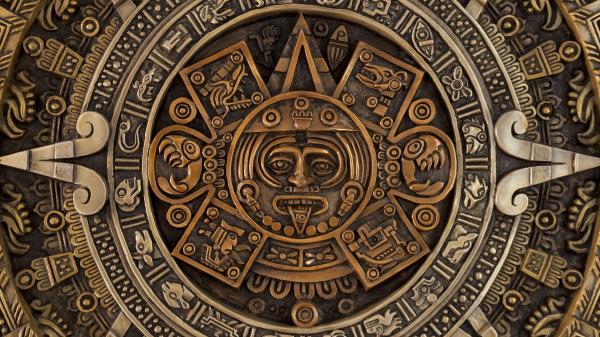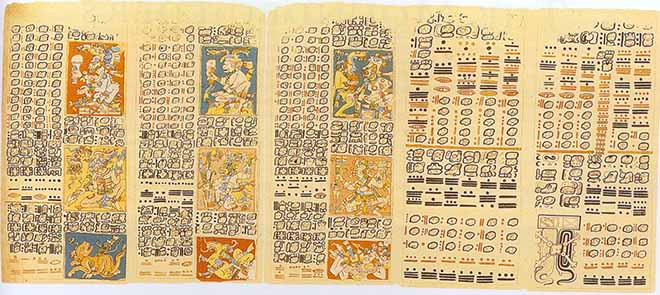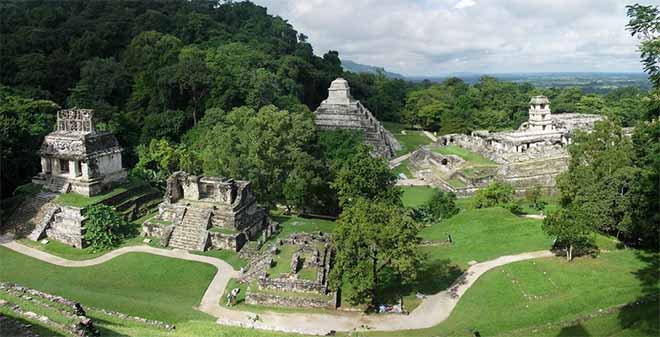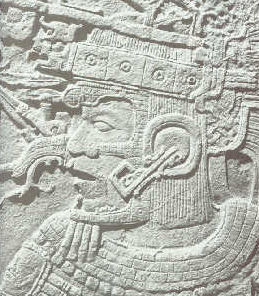What Caused The Fall Of The Mayan Empire ?
Current Theories Examined

A brilliant civilization of Central America, the Mayan empire dominated the present-day Mexican territories of Yucatan and Chiapas, as well as Honduras and Guatemala. From 800, its cities are experiencing a sharp decline. The fall of the Mayan empire is one of the greatest puzzles of archeology.
Mayan history

Little is known about mayan culture and the Mayans in general : the bloody Spanish conquest has consumed much of the written record and destroyed pre-colonial societies. Archeology remains the only way for historians to one day discover the mystery of the mayans disappearance. A people of remarkable farmers, artisans and intellectuals, the Mayas invented the first known prehispanic writing in America. The Mayas advanced knowledge of astronomy and mayan human sacrifices have for centuries inspired the collective imagination to the detriment of historical truth. The Mayan civilization reached its peak between 625 and 800, during which time monumental administrative cities were built, economic and political powers governing the surrounding countryside; the main ones are Tikal (Guatemala), Copan (Honduras), Palenque and Uxmal (Mexico). The richness of the Mayan empire is reflected in the splendor of its cities. Tikal, the largest known urban center, extends over 10 km and has no less than 3,000 different constructions: temples, palaces, playgrounds ... Yet, at the beginning of the 9th century, we notice the abrupt cessation of the constructions of political and religious buildings. The Mayan civilization collapse seems to be amplified by a rapid and sharp decline of the population. From 950, the Mayan empire is completely necrotic. In 1000, once flourishing agglomerations are nothing more than fields of uninhabited mayan ruins. The few still active cities of Yucatan, Chichen Itza and Mayapan are experiencing episodes of local hegemony without a future. At the beginning of the sixteenth century, the conquistadors were confronted with a multitude of small independent and disunited states unable to oppose any resistance.
Mayan disappearance theories

Generations of researchers have tried to explain the Maya collapse. Early studies interpreted depopulation as excess mortality. The eventuality of an extermination war then naturally imposed itself. From 800, Mayas seem to have suffer the influence of the outside world, notably that of the Maya Putún, originating from the present state of Tabasco on the shores of the Gulf of Mexico, and from the Toltecs from the North. No trace, however, indicates an armed intervention. Mayan trades with the toltec capital of Teotihuacan are attested from the beginning of the classical period (250 to 900), well before the Mayans disappearance. The link of cause and effect is therefore dangerous to establish, especially since Teotihuacan experienced the same fate as the Mayan cities: the city seems to have begun to lose its splendor between 700 and 750 - it could even have been abandoned in this time - which contradicts the thesis of an armed conflict. The premature decline of Teotihuacan, the privileged economic partner of the Mayan empire, could have contributed to the decline of the entire region. Another suspect on the list: the city of Chichen Itza. By imposing its domination on the Yucatan in the ninth century, it would have modified the configuration of the Mayan trade. Roads carrying essential raw materials would have been diverted to coastal routes and would have condemned to decline inland cities. Moreover, at the time of the Mayan civilization collapse, the cities of Yucatan, most along the new trade routes, seem to have experienced some improvement: Chichen Itza and Mayapan are after 900 the largest cities in Central America thanks to better access to fishery products.
The decay of mayan social structures

If the enemy did not come from outside, he could have come from within. This is the deduction made by Eric Thompson, renowned archaeologist and Mesoamericanist. At the origin of his thinking is the discovery of voluntarily mutilated figurines of characters adorned with attributes of wealth - probably notables, sovereigns or priests. From there came an interesting hypothesis: the peasants, overwhelmed by the taxes and contributions needed for increasingly resource-intensive constructions, would have revolted against the authorities. The revolt, putting down the political and religious power, would have caused the deliquescence of mayan social structures. Later, the peasants would have continued to live around the cities, but most buildings, symbols of a bygone era, would have gradually fallen into mayan ruins. Once again, the archaeological evidence is lacking to validate this thesis: no trace of urban disorders - mass graves, pyres, destruction, fires - and a fortiori fighting was found. It was only in Piedras Negras, in the current Mexican state of Coahuila, that such stigmas were detected: buildings and attributes of power - including what looks like a throne - were destroyed by fire. But this kind of event, even on the entire Maya territory, can not explain by itself a depopulation of such magnitude. As noted by historian David Webster, "a population free of the power of an elite has no reason to decline so quickly or even to reform its indisputable reality: in the history of humanity, no popular revolution, no matter how violent, has led to the abandonment of entire regions.
Mayan agriculture at its breaking point
Advances in science have recently led to new avenues. In view of the paucity of archaeological data, the impact of the environmental factor has benefited from further investigation. Mayan agriculture production model could be the cause of all their ills. Mayan agriculture methods are numerous, and for the most part still poorly understood: canals, earthworks, elevations, drying or seasonal use of marshes, use of fertilizers based on excrement ... Soil depletion due to intense corn cultivation would have weakened the Mayans food economy and led to their progressive impoverishment. The erosion and sedimentation of rivers resulting from this intensive agriculture would have contributed to the decline of biodiversity. This phenomenon is a breeding ground for epidemics: in tropical regions, such as southern Maya territory, humidity and the proliferation of parasites favor the spread of diseases. The massive clearings caused by urbanization and mayan agriculture could have disrupted the ecosystem while increasing the risk of infection. In addition, people in America have always been spared from bubonic plague-type pandemics. They would have been more sensitive to imported viruses. For proof, when European settlers arrive on the continent, the population will be decimated by whooping cough, measles or smallpox, common diseases in Europe. According to the anthropologist Demitri B. Shimkin, an endemic trypanosomiasis-like parasitic disease or intestinal virus is plausible in the environmental context of the time. The virus, which causes severe diarrhea, primarily affects young children, which could explain the sharp decline in population and the mayan civilization collapse.
An environmental cataclysm

A sudden natural phenomenon, such as a series of earthquakes or a sudden change in climate, could be the cause of the Mayan empire fall. All the geological examinations that have been conducted locally have found no major climatic fractures. The harmful influence of mayan drought over a longer period is not excluded. The Mayans managed for centuries to make their civilization prosper on a seasonal desert: naturally poor soils made crops particularly vulnerable in summer. Despite the use of an intelligent water storage and rationing system, crop yield was totally dependent on rainfall. In this precarious balance, even a small difference in the amounts of water collected could have unfortunate consequences. The global comparison of climate models and geological samples has given rise to an interesting theorem: historically, climatologists have found that a cold wave in the northern hemisphere is usually accompanied by a period of drought in Central America. However, in the 11th century, records indicate that northern Europe has suffered from extremely low temperatures. From then on, the Mayan civilization, victim of a prolonged wave of drought, would have quickly consumed its resources, consequently suffered the impoverishment of its trade and seen its central power weakened. Significant food uprisings would have been declared, and the cities would have been progressively abandoned. The Mayans disappearance would be the result of a logical sequence of events. It is impossible in the current state of knowledge to determine whether any of these events prevailed over others. The mystery of the fall of the Mayas remains intact.









































































































































































































































































































































